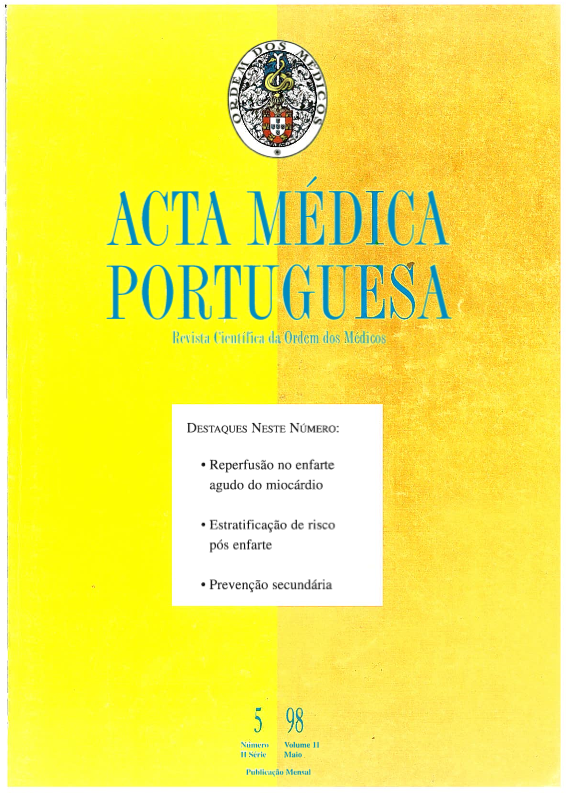Secondary prevention of myocardial infarct.
DOI:
https://doi.org/10.20344/amp.2251Abstract
Preventive measures are the most powerful measures to treat manifestations of ischemic cardiopathy. Secondary prevention of myocardial infarction involves the following intervention areas: a) Limitation of adverse physiological and emotional consequences of the acute illness; b) Identification of the patients particularly exposed to the risk of new episodes of ischemic cardiopathy or to their consequences, namely reinfarction and sudden death; c) Institution of therapeutic attitudes, surgical or medical, that can prolong life and can oppose functional deterioration and prevent symptoms; d) Institution of measures that can oppose the progression of the initial disease that is, in almost all cases, atherosclerosis. Measures that can oppose the progression of cardiac disease and its consequences after an episode of myocardial infarction, and measures that can oppose the evolution of atherosclerosis are described in this article. The measures that can influence the risk factors after an episode of myocardial infarction are briefly commented: characteristics related to life style and physical exercise; smoking habits; plasmatic lipid levels; high blood pressure; and therapeutic substitution with estrogens after menopause. Pharmacological interventions in secondary prevention of myocardial infarction are described, namely with the following groups of substances: beta-adrenergic blocking agents; platelet active agents; anticoagulants; and angiotensin-converting enzyme inhibitors.Downloads
Downloads
How to Cite
Issue
Section
License
All the articles published in the AMP are open access and comply with the requirements of funding agencies or academic institutions. The AMP is governed by the terms of the Creative Commons ‘Attribution – Non-Commercial Use - (CC-BY-NC)’ license, regarding the use by third parties.
It is the author’s responsibility to obtain approval for the reproduction of figures, tables, etc. from other publications.
Upon acceptance of an article for publication, the authors will be asked to complete the ICMJE “Copyright Liability and Copyright Sharing Statement “(http://www.actamedicaportuguesa.com/info/AMP-NormasPublicacao.pdf) and the “Declaration of Potential Conflicts of Interest” (http:// www.icmje.org/conflicts-of-interest). An e-mail will be sent to the corresponding author to acknowledge receipt of the manuscript.
After publication, the authors are authorised to make their articles available in repositories of their institutions of origin, as long as they always mention where they were published and according to the Creative Commons license.









